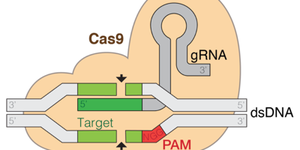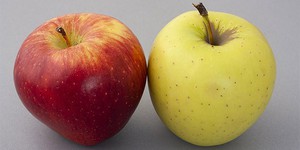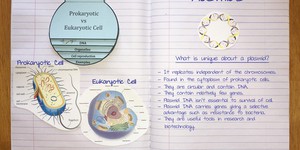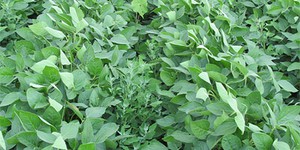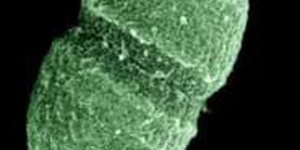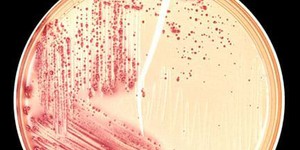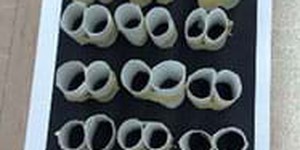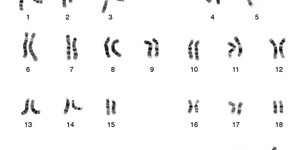Biotechnology Lesson Plans (8 results)
Yogurt, biofuel, biodegradable plastics, and antibiotics are all examples of products based on biotechnology research and manufacturing techniques. What else will we be able to create as we use biotechnology in new ways?
|
Select a resource
Sort by
|
Lesson Plan
Grade: 6th-12th
5 reviews
In this lesson plan, students will take a closer look at the most recent developments in gene editing. Specifically, they will learn about the CRISPR technology using various interactive simulations and other resources. Based on their gained knowledge, students will create a model of the CRISPR-Cas9 components and create a stop-motion animation video of the molecular mechanism of CRISPR-Cas9.
Remote learning adaptation:
This lesson plan can be conducted remotely. Students can work…
Read more
NGSS Performance Expectations:
Lesson Plan
Grade: 6th-8th
6 reviews
Using the context of apples, students will apply their knowledge of heredity and genetics to distinguish between sexual and asexual reproduction as they explain how new varieties of apples are developed and then propagated to meet consumer demand for a tasty, uniform, consistent product.
Read more
NGSS Performance Expectations:
New
Lesson Plan
Grade: 6th-9th
In this lesson plan, students will model the complex biologic manufacturing process. First, they will model the cellular expansion process that occurs in a bioreactor. Then, students will lyse the cells to isolate the proteins from the dyed cell debris. Lastly, they will model the advanced filtration process to purify proteins so they can be used as medicines.
Read more
NGSS Performance Expectations:
Lesson Plan
Grade: 9th-12th
3 reviews
This lesson compares and contrasts prokaryotic and eukaryotic cells and examines the form and function of the plasmid found in prokaryotic cells. Students will then use these principles to simulate how a desirable gene can be isolated and inserted into a plasmid as one step in the process of creating a genetically modified organism (GMO).
Read more
NGSS Performance Expectations:
Lesson Plan
Grade: 9th-12th
Students will compare and contrast methods of selective plant breeding, describe the scientific process of creating a genetically modified plant, compare genetically modified soybean seeds to conventional soybean seeds, describe the impact weeds have on plant growth, and understand how a genetically modified seed can help farmers manage weeds.
Read more
NGSS Performance Expectations:
Lesson Plan
Grade: 9th-12th
Students construct paper recombinant plasmids to simulate the methods genetic engineers use to create modified bacteria. They learn what role enzymes, DNA and genes play in the modification of organisms. For the particular model they work on, they isolate a mammal insulin gene and combine it with a bacteria's gene sequence (plasmid DNA) for production of the protein insulin.Engineering Connection
Bacteria are the most common organisms modified by genetic engineers due to…
Read more
NGSS Performance Expectations:
Lesson Plan
Grade: 6th-8th
Students explore adaptations by researching how animals, plants, and bacteria change based on their environment. They grow bacterial colonies in various environments and hypothesize how each environment will affect the cell culture size and color. After a day of pre-growth, the culture is spun down in a centrifuge and the cell pellet is analyzed. Finally, students research bacteria adaptations that allow them to survive in extreme environments then brainstorm how the…
Read more
NGSS Performance Expectations:
Lesson Plan
Grade: 9th-12th
Students act as if they are biological engineers following the steps of the engineering design process to design and create protein models to replace the defective proteins in a child's body. Jumping off from a basic understanding of DNA and its transcription and translation processes, students learn about the many different proteins types and what happens if protein mutations occur. Then they focus on structural, transport and defense proteins during three challenges…
Read more
NGSS Performance Expectations:
Lesson Plan
Grade: 9th-12th
3 reviews
This lesson introduces students to the relationships between chromosomes, genes, and DNA molecules. Using the example of a strawberry, it also provides activities that clearly show how changes in the DNA of an organism, either naturally or artificially, can cause changes.
Read more
NGSS Performance Expectations:
|

